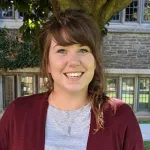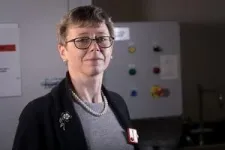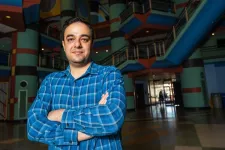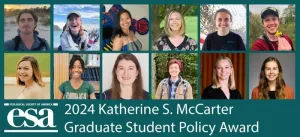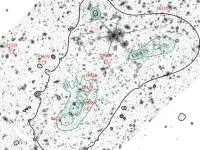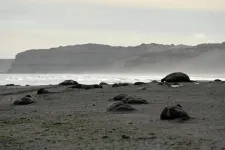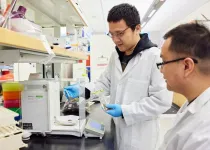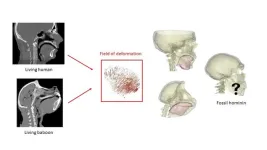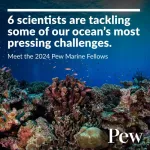(Press-News.org) Hamilton, ON, Feb. 28, 2024 – Diagnosing anemia in living people is typically a matter of a routine blood test.
Retrospectively diagnosing anemia in people who died decades or even centuries ago is much more challenging since there is no blood left to test.
Anthropologists at McMaster University and the University of Montreal, working with a hematologist colleague, have overcome that obstacle by developing a way to detect anemia through patterns in the structures of bones.
Paleopathologists Megan Brickley, who holds the Tier One Canada Research Chair in The Bioarchaeology of Human Disease, and doctoral candidate Brianne Morgan, together University of Montreal anthropologist Isabelle Ribot and clinician Michelle Zeller, an Associate Professor of Hematology and Thromboembolism at McMaster, are the authors of a new study in The Journal of Archaeological Science describing the discovery.
“Anemia is especially prevalent among people of lower socioeconomic status, and it’s likely that was also true in the past,” says Morgan, the paper’s lead author . “Now we have a way we can confirm this with physical evidence.”
The paper describes how the researchers studied the sternum – the plate-like chest bone where the upper ribs meet – and found microscopic gaps between bone layers in living anemia patients subjects which matched patterns in archaeological remains.
Anemia –a deficiency of red blood cells or their components – affects about 2 billion people worldwide, many of them women and children, causing such symptoms as fatigue, weakness, paleness and shortness of breath.
It’s a significant health concern that was first recognized as a blood condition in the 1800s as the microscope came into common use. Anemia had been recognized well before that time, but only by its symptoms.
Using modern knowledge and technology to understand anemia’s patterns of occurrence through history can help modern physicians and researchers understand more about how and why anemia occurs, especially as it relates to such influences as diet, poverty, sex and age.
“We suspect anemia was really common in the past, but there has been no definitive way to show how common it was,” Brickley says. “Now we can use this completely new approach.”
Red blood cells are made in bone marrow, and it’s possible to diagnose anemia in both living and dead subjects by measuring the gaps between bone layers, which are more pronounced in anemic subjects.
The researchers used micro-CT scanning to study skeletal remains derived from a Quebec cemetery of the 1700s and 1800s and compared them to samples from living patients both with and without anemia to establish the correlation definitively.
The remains are part of a specially designated research collection.
The team examined the microscopic structures of sternum bones, because in life they bear weight less directly than bones from body parts such as the legs, arms and spine. The sternum is less susceptible to fractures and other damage, making structural evidence of anemia easier to isolate.
The researchers studied subjects between 18 and 45, and among the next challenges will be to see whether these gaps may be related to bone fragility, and if the methods can distinguish anemia from osteoporosis in older subjects.
END
Researchers create method to detect cases of anemia in archaeological remains
Understanding past patterns of the common blood disorder can shape modern knowledge
2024-02-28
ELSE PRESS RELEASES FROM THIS DATE:
Data-processing tool could enable better early stage cancer detection
2024-02-28
Cancers begin with abnormal changes in individual cells, and the ability to track the accumulation of mutations at the single-cell level can shed new light on the early stages of the disease. Such knowledge could enable more effective early detection and treatment options for patients as well as more accurate predictions of disease progression.
According to a paper in Nature Communications, a team of Rice University researchers led by Luay Nakhleh has developed a platform for integrating DNA and RNA data from single-cell sequencing with greater speed and precision than more recent, state-of-the-art technologies. The method, mapping cross domain ...
ESA 2024 Graduate Student Policy Award Cohort named
2024-02-28
The Ecological Society of America is pleased to announce the recipients of the 2024 Katherine S. McCarter Graduate Student Policy Award (GSPA). Students in the 2024 cohort are engaged in advocacy with an interest in science policy. Awardees will travel to Washington, D.C., for policy, communication and career training followed by meetings with lawmakers on Capitol Hill.
“I am thrilled to welcome this latest cohort of Graduate Student Policy Awardees,” said ESA President Shahid Naeem. “The caliber of this year's awardees, as has been true for awardees in our program since its inception, reflects ...
Five Sandia Labs scientists earn 2024 Black Engineer of the Year Awards
2024-02-28
Dissecting doorbells, exploring music, mastering retail software, love of the arts and old-fashioned hard work were early paths that led five Sandia National Laboratories engineers to their callings and recently earned them national Black Engineer of the Year Awards.
The awards, recognizing outstanding achievements in engineering, science and technology, include Science Spectrum Trailblazer, Modern Day Technology Leader, Most Promising Engineer in Industry and the Senior Investigator Award.
Each Sandia award winner has made significant contributions in creative, innovative and science-based systems engineering solutions to help solve our nation’s most challenging national security ...
'Cosmic lighthouses' that cleared primordial fog identified with JWST
2024-02-28
UNIVERSITY PARK, Pa. — Scientists working with data from NASA's James Webb Space Telescope (JWST) have obtained the first full spectra of some of the earliest starlight in the universe. The images provide the clearest picture yet of very low-mass, newborn galaxies, created less than a billion years after the Big Bang, and suggest the tiny galaxies are central to the cosmic origin story.
The international team of researchers, including two Penn State astrophysicists, published their results ...
Avian influenza virus is adapting to spread to marine mammals
2024-02-28
The highly pathogenic avian influenza virus H5N1 has adapted to spread between birds and marine mammals, posing an immediate threat to wildlife conservation, according to a study from the University of California, Davis, and the National Institute of Agricultural Technology (INTA) in Argentina.
The study, published in the journal Emerging Infectious Diseases, is the first genomic characterization of H5N1 in marine wildlife on the Atlantic shore of South America.
For the study, scientists collected brain samples from four sea lions, one fur seal and a tern found dead at the most affected sea lion rookery in Argentina. All ...
Study reveals accelerated soil priming under climate warming
2024-02-28
A first-of-its-kind study led by researchers at the University of Oklahoma highlights a crucial biosphere feedback mechanism and its effects on releasing soil carbon into the atmosphere.
Jizhong Zhou, the director of the Institute for Environmental Genomics and George Lynn Cross Research Professor in the School of Biological Sciences at OU, is the corresponding author of, “Experimental warming accelerates positive soil priming in a temperate grassland ecosystem,” recently published in Nature Communications. Zhou said the study is the first to utilize laboratory and field experimental ...
Improving children’s access to care could mitigate the health consequences of exposure to neighborhood violence
2024-02-28
A new collaborative study between Boston Medical Center, Brigham and Women’s Hospital, Boston Children’s Hospital, Hennepin Healthcare Research Institute, University of Pennsylvania, and Children’s Hospital of Philadelphia finds exposure to neighborhood violence among children was associated with unmet health needs and increased acute care utilization. Published in the American Journal of Preventive Medicine and based on nationally representative data on violence exposure and gold standard access to care measures from the National Health Interview Survey, this study shows that evidence-based interventions to improve access to care in communities ...
Molecular clusters on glial cells show they are more than our brain’s ‘glue’
2024-02-28
Neuroscientists at Fred Hutchinson Cancer Center have found that an often-overlooked type of brain cell called glia has more of a role in brain function than previously thought.
In the journal Cell Reports, Fred Hutch neuroscientist Aakanksha Singhvi, PhD, and her team report that a single glial cell uses different molecules to communicate with different neurons. Careful clustering of these molecules ensures that the glial cell can conduct a distinct “conversation” with each neuron. Through these molecular facilitators, glia can influence how neurons respond to environmental cues like ...
New method enables 3D tongue modelling, for example from fossilized hominin skulls, and might help understand the emergence of human speech
2024-02-28
New method enables 3D tongue modelling, for example from fossilized hominin skulls, and might help understand the emergence of human speech.
####
Article URL: https://journals.plos.org/ploscompbiol/article?id=10.1371/journal.pcbi.1011808
Article Title: Predicting primate tongue morphology based on geometrical skull matching. A first step towards an application on fossil hominins
Author Countries: France
Funding: This work is a production of the members of the team "Origins of speech" hosted at Sorbonne University - Institut des Sciences du Calcul et des Données. The funders had no role in study design, data collection ...
Pew names scientists from 6 countries as 2024 fellows in marine conservation
2024-02-28
PHILADELPHIA—The Pew Charitable Trusts announced today that it has selected six distinguished researchers as recipients of the 2024 Pew fellowship in marine conservation. The researchers—from Canada, China, Denmark, the Philippines, the United Kingdom, and the United States—join a community of more than 200 Pew marine fellows who have undertaken projects to deepen our understanding of the ocean and advance the sustainable use of marine resources.
“The world’s oceans have never been under greater threat. Humankind relies on healthy oceans in countless ways,” said Susan K. Urahn, Pew’s ...
LAST 30 PRESS RELEASES:
Numbers in our sights affect how we perceive space
SIMJ announces global collaborative book project in commemoration of its 75th anniversary
Air pollution exposure and birth weight
Obstructive sleep apnea risk and mental health conditions among older adults
How talking slows eye movements behind the wheel
The Ceramic Society of Japan’s Oxoate Ceramics Research Association launches new international book project
Heart-brain connection: international study reveals the role of the vagus nerve in keeping the heart young
Researchers identify Rb1 as a predictive biomarker for a new therapeutic strategy in some breast cancers
Survey reveals ethical gaps slowing AI adoption in pediatric surgery
Stimulant ADHD medications work differently than thought
AI overestimates how smart people are, according to HSE economists
HSE researchers create genome-wide map of quadruplexes
Scientists boost cell "powerhouses" to burn more calories
Automatic label checking: The missing step in making reliable medical AI
Low daily alcohol intake linked to 50% heightened mouth cancer risk in India
American Meteorological Society announces Rick Spinrad as 2026 President-Elect
Biomass-based carbon capture spotlighted in newly released global climate webinar recording
Illuminating invisible nano pollutants: advanced bioimaging tracks the full journey of emerging nanoscale contaminants in living systems
How does age affect recovery from spinal cord injury?
Novel AI tool offers prognosis for patients with head and neck cancer
Fathers’ microplastic exposure tied to their children’s metabolic problems
Research validates laboratory model for studying high-grade serous ovarian cancer
SIR 2026 delivers transformative breakthroughs in minimally invasive medicine to improve patient care
Stem Cell Reports most downloaded papers of 2025 highlight the breadth and impact of stem cell research
Oxford-led study estimates NHS spends around 3% of its primary and secondary care budget on the health impacts of heat and cold in England
A researcher’s long quest leads to a smart composite breakthrough
Urban wild bees act as “microbial sensors” of city health.
New study finds where you live affects recovery after a hip fracture
Forecasting the impact of fully automated vehicle adoption on US road traffic injuries
Alcohol-related hospitalizations from 2016 to 2022
[Press-News.org] Researchers create method to detect cases of anemia in archaeological remainsUnderstanding past patterns of the common blood disorder can shape modern knowledge
